Light therapy is a type of treatment that uses light to target specific areas of the skin. The visible light (with wavelengths of 380 to 740 nm) energizes the skin cells to a depth of about 1-2 mm. This makes it an ideal treatment for conditions like acne, eczema, psoriasis, and hyperpigmentation.
Light therapy works by providing extra energy for trillions of cells in our bodies. Specifically, the wavelengths photoactivate the mitochondria in our cells to produce more energy in the form of adenosine triphosphate or ATP. The different wavelengths have been shown in clinical studies to offer varying benefits including eliminating harmful bacteria, stimulating collagen, and reducing inflammation. Light therapy is typically done in a series of treatments, and each session lasts for about 20 minutes.
Dermatologists have found that light therapy displays an excellent safety profile and can be done safely at home. The results have shown to be effective with daily use (recommended: 90 days) with little to no side effects.
What Is LED Light Therapy?
LED light therapy is a type of phototherapy that uses low-level lasers or light-emitting diodes (LEDs) to treat various conditions. It is also sometimes referred to as photobiomodulation therapy (PBMT) or low-level laser therapy (LLLT).
It is a gentle, non-invasive treatment option that has very few side effects. The most common side effect is temporary redness at the site of treatment. LED light therapy is generally safe for all skin types, including sensitive skin.
Scientists discovered the medical benefits of light therapy on the skin in the late 1980s and now that practice is becoming increasingly popular. It can be used to treat wrinkles, fine lines, acne, and other skin conditions. It can also be used to relieve pain, reduce inflammation, and improve healing time from injuries or surgery.
LED light therapy can be used to treat a variety of conditions, including:
- Wrinkles
- Acne
- Scars
- Pain relief
- Muscle soreness and stiffness
- Joint pain and inflammation
- Tendonitis
- Bursitis
What Does LED Light Therapy do?
LED light therapy is a popular treatment that uses different wavelengths of light to improve the appearance of the skin and the overall state of the body. Here are some things that LED light therapy can do:
-
It can help improve your mood and energy levels
-
It can help reduce pain and inflammation
-
It can help speed up healing
-
It can help increase circulation
-
It can help reduce the appearance of fine lines and wrinkles
-
It can help reduce the appearance of scars and stretch marks
-
It can help treat acne and other skin conditions
-
It can help boost your immune system
How Does LED Light Therapy Work For Skin?
LED light therapy works by stimulating the production of collagen and elastin in the skin. Collagen and elastin are two essential proteins that help to keep the skin looking young and healthy. As we age, our bodies produce less of these proteins, which leads to wrinkles, fine lines, and other signs of aging. By stimulating the production of collagen and elastin, LED light therapy can help to reduce the appearance of wrinkles, and improve the overall appearance of the skin.
- LED light therapy works by using specific wavelengths of light to penetrate the skin.
- The light energy is then absorbed by cells and used to promote various biological reactions.
- These reactions can include increased collagen production, reduced inflammation, and improved wound healing.
- LED light therapy is often used to treat conditions like acne, psoriasis, eczema, and wrinkles.
- It can be used as a standalone treatment or in conjunction with other treatments like topical creams or oral medications.
- A typical LED light therapy session lasts for about 20-30 minutes.
- Most people see noticeable improvements after just a few sessions, though the number of sessions needed may vary depending on the individual and their condition.
- LED light therapy is generally considered safe with little to no side effects.
- The most common side effect is temporary redness of the skin.
- LED light therapy is an increasingly popular treatment option for many common skin conditions. It is safe, effective, and affordable, making it a great choice for those looking for an alternative to traditional treatments.
LED light therapy works by increasing collagen production, which helps to reduce the appearance of wrinkles and fine lines. It also helps to reduce inflammation and redness, and can even out skin tone. LED light therapy is usually done in a series of sessions, and most people see results after just a few treatments.
LED light therapy is a gentle, non-invasive treatment option that has very few side effects. The most common side effect is temporary redness or swelling at the site of treatment. LED light therapy is generally safe for all skin types, including sensitive skin.
How long does it take for LED light therapy to work?
LED light therapy is a popular choice for those looking for an alternative to traditional therapies. But how long does it actually take for LED light therapy to work?
The answer depends on a number of factors, including the condition being treated, the intensity of the light, and the length of time the patient is exposed to the light. In general, however, most people see results within a few weeks of starting LED light therapy. Some may see results even sooner. Our customers have noticed results even after 10 days of daily use. We recommend using Dermabeam devices for 90 days to see significant improvements.
Who should not have LED light therapy?
If you’re considering LED light therapy, you may be wondering if it’s right for you. Led light therapy can provide a number of benefits, including reducing inflammation, stimulating collagen production, and improving skin tone and texture.
However, it’s important to note that not everyone will respond to LED light therapy in the same way. Some people may notice immediate results, while others may require multiple sessions before seeing any improvement.
Light therapy is not recommended for epileptic patients, people sensitive to flashing lights, people with underlying eye conditions, and people who are taking antibiotics that increase skin sensitivity.
If you’re considering LED light therapy, be sure to consult with a qualified practitioner to see if it’s right for you. If you’re looking for LED Light Therapy for your skin, you can check out Dermabeam Masks.
Dermabeam offers a variety of sleek light therapy devices that offer a multitude of health benefits including improvements in skin complexion, cellular energy, and overall longevity while maintaining an excellent safety profile. Get your light therapy device today.






[…] Red light therapy has been shown to be effective in treating a variety of conditions, including skin conditions, wound healing, and pain relief. It’s also been shown to boost energy levels and improve mood. Light therapy also helps your skin in many other ways. You can find out more about How LED Light Therapy Work & What It Does for the Skin. […]
[…] Light therapy uses specific wavelengths to photoactivate cells inside the skin and body. Cells become energized with extra ATP (adenosine triphosphate) which allows cells to repair themselves quickly and optimize cellular functions. Clinical studies have shown that light therapy can help improve skin conditions such as acne and eczema and also help reduce inflammation inside the muscles and joints. Read our recent blog on What Is Light Therapy? […]
[…] Light therapy is a type of treatment that uses exposure to artificial light to help ease symptoms of certain medical conditions. Light therapy is also sometimes referred to as phototherapy or bright light therapy.Light therapy is a form of alternative medicine that uses low-level lasers or LEDs to relieve pain and promote healing. The theory behind light therapy is that the energy from the lasers and LEDs can help to stimulate cellular activity, which in turn can help to reduce inflammation and speed up the healing process. Light therapy is sometimes also referred to as low-level light therapy or photo-biomodulation.During light therapy, a person sits or stands near a special light source that emits bright light. The light is usually given off for a set amount of time each day, typically lasting between 30 minutes to an hour.You can visit this article if you want to know How LED Light Therapy Works & What It Does for Skin. […]
[…] You can visit this article to know more about How Light Therapy Works. […]